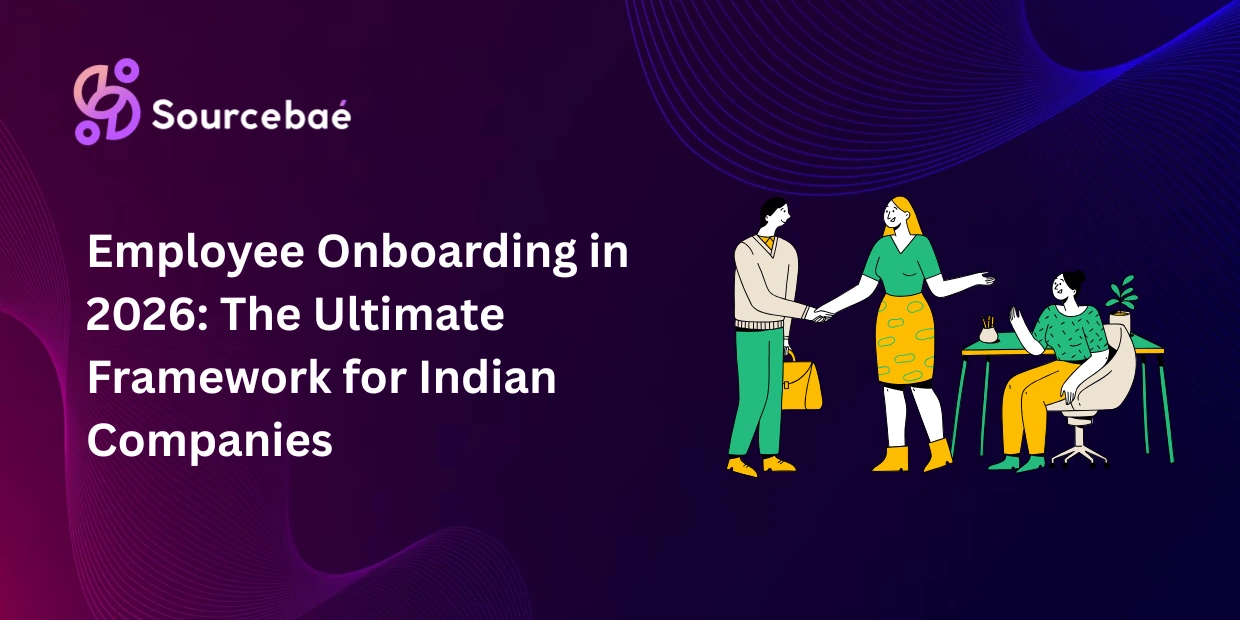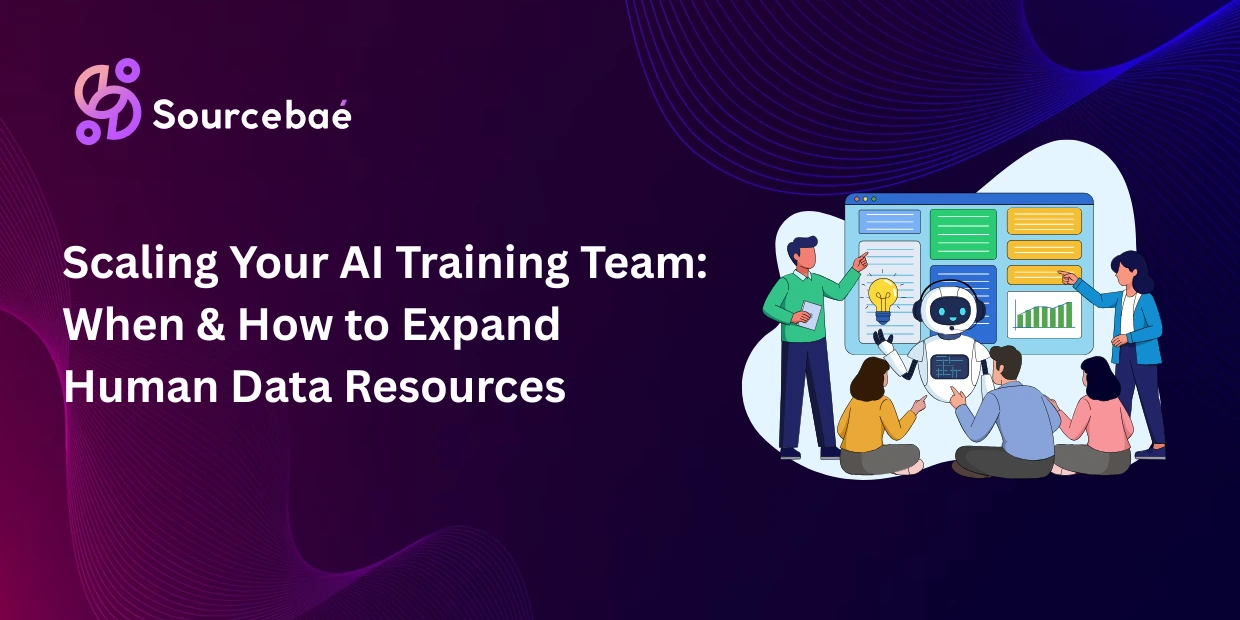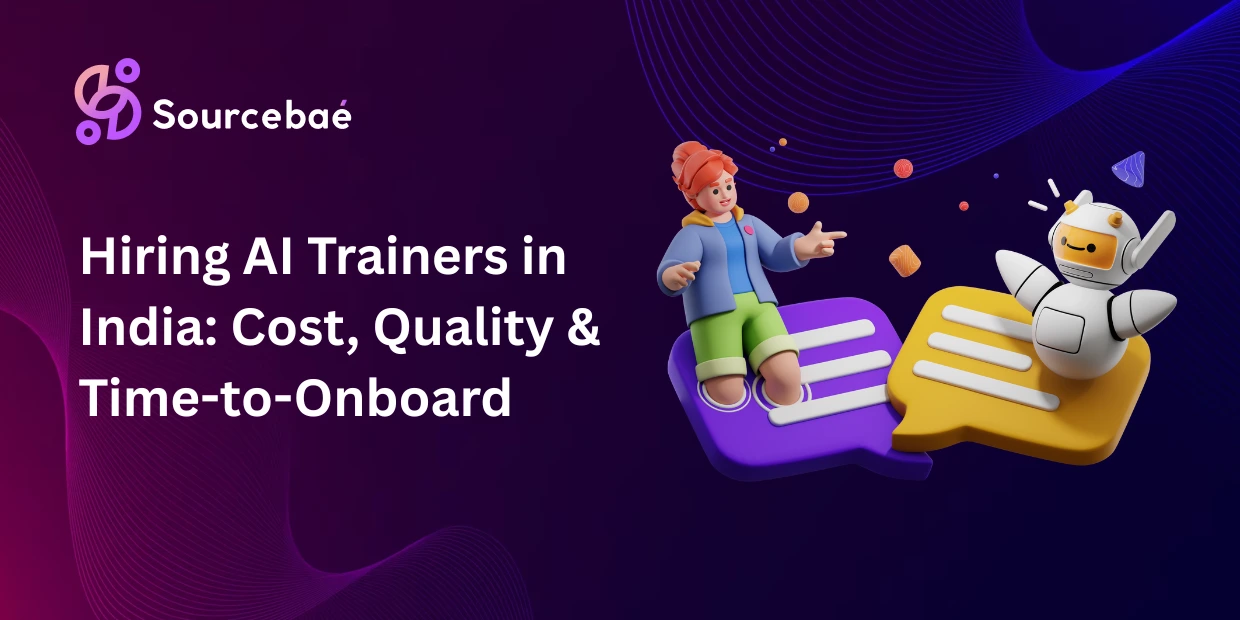In today’s competitive global talent market, optimized job descriptions have evolved from simple role outlines to strategic recruiting tools that can make or break your hiring success. This is particularly crucial when targeting Indian talent, where cultural preferences, career expectations, and decision-making factors differ significantly from Western markets.
With India’s technology sector projected to reach $350 billion by 2025 and over 50% of job postings now including salary information, organizations must adapt their recruitment strategies to attract this valuable talent pool through carefully crafted, optimized job descriptions that resonate with Indian professionals’ unique expectations and career motivations.
Recent data reveals that 75% of job seekers decide within 30 seconds whether to apply based on a job description, while positions with clear, engaging descriptions receive 40% more applications than generic postings. For companies seeking to hire from India’s vast talent pool of over 5 million software professionals, understanding how to craft compelling, culturally-aware job descriptions is no longer optional—it’s essential for competitive advantage.
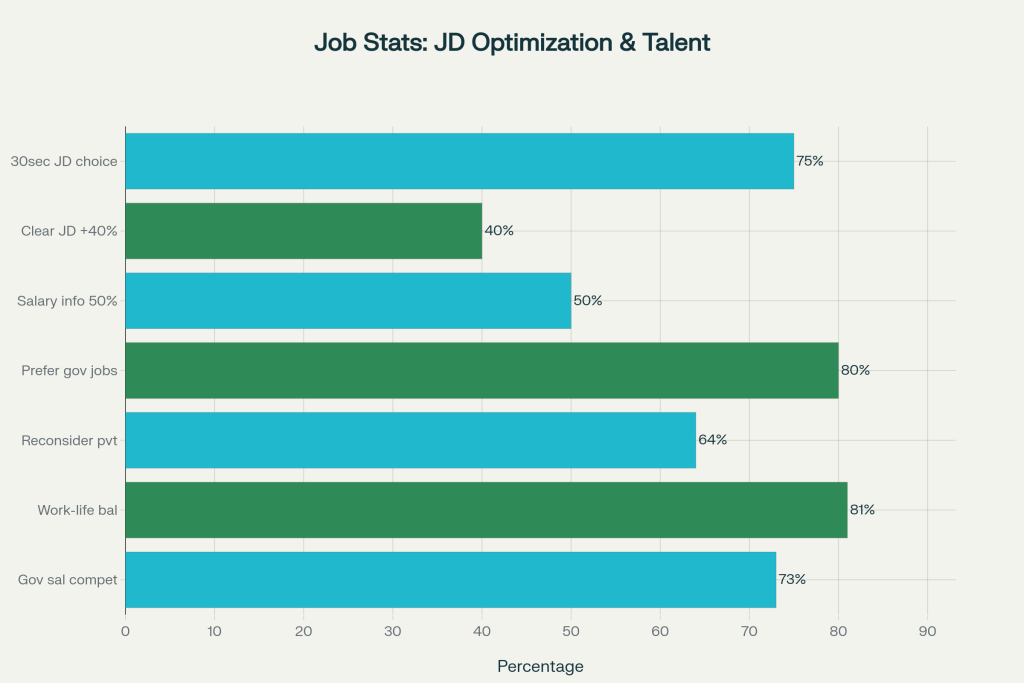
Key statistics highlighting the importance of job description optimization and Indian talent preferences in hiring
Understanding the Indian Talent Landscape
The Scale and Scope of Indian Talent
India represents the world’s largest pool of English-speaking technical professionals, producing approximately 1.5 million engineering graduates annually. This massive talent base spans diverse specializations, from traditional software development to emerging technologies like artificial intelligence, machine learning, and cloud computing.
Global Capability Centers (GCCs) have surpassed traditional IT companies in net hiring for the second consecutive year, adding over 100,000 positions compared to just 11,000 by leading IT service firms in the first nine months of 2024.
The Indian workforce demonstrates remarkable adaptability and global readiness. Unlike many other markets, Indian professionals are accustomed to working across time zones, communicating in English, and collaborating with international teams. This cultural compatibility makes them highly sought after for remote and hybrid work arrangements, with remote job postings increasing by 32% since 2023.
Career Motivations and Decision Factors
Understanding what drives Indian professionals is crucial for crafting effective job descriptions. Career growth matters more than job titles for Indian candidates, who often prioritize learning opportunities and long-term career development over immediate compensation increases. This preference stems from a culture that values continuous improvement and professional advancement.
Work-life balance has become increasingly important, with 81% of survey participants agreeing that they prefer positions offering better work-life balance due to lower work pressure and structured environments. This shift represents a significant change in priorities, particularly among millennials and Gen Z professionals who now make up a substantial portion of the workforce.
Financial security remains paramount, but transparency has become equally important. Over 50% of job postings in India now include salary information, up from just 26% in March 2022. This dramatic increase reflects job seekers’ demand for clarity and their preference for informed decision-making when exploring opportunities.
The Psychology of Job Description Optimization
First Impressions and Decision Speed
The psychology behind job application behavior reveals why optimization is critical. Job seekers spend less than 50 seconds examining a job posting to determine suitability. This brief window means every word, phrase, and structural element must work efficiently to communicate value and relevance.
Indian professionals, like their global counterparts, make rapid judgments based on several key factors: role clarity, growth potential, company culture alignment, and compensation transparency. However, cultural context adds additional layers of consideration, including family expectations, social status implications, and long-term stability prospects.
Language and Cultural Sensitivity
Inclusive language isn’t just about avoiding bias—it’s about cultural resonance. Indian job seekers respond positively to descriptions that acknowledge their diverse backgrounds, technical expertise, and global perspectives. Words like “collaborative,” “innovative,” and “growth-oriented” resonate strongly, while overly aggressive or competitive language may inadvertently alienate potential candidates.
Gender-neutral language has become particularly important as India’s female workforce participation increases. Using terms like “team member” instead of “guys” and “representative” instead of “salesman” ensures broader appeal and demonstrates organizational commitment to diversity and inclusion.
Core Components of Optimized Job Descriptions for Indian Talent
1. Strategic Job Title Optimization
Job titles serve as the primary discovery mechanism for candidates using search platforms and job boards. LinkedIn data shows that job titles with 80 characters or less receive the most clicks. For Indian talent, this means using industry-standard terminology that reflects actual search behavior.
Effective titles for Indian market include specific technical skills and experience levels. Instead of creative titles like “Code Ninja” or “Tech Guru,” opt for clear, searchable options like “Senior Full Stack Developer – React/Node.js” or “Cloud Solutions Architect – AWS/Azure.” This approach improves both SEO performance and candidate understanding.
Consider regional search patterns and terminology preferences. Indian professionals often search using specific technology stacks, company types (startup vs. enterprise), and work arrangements (remote, hybrid, on-site). Incorporating these elements naturally into titles increases visibility and relevance.
2. Salary Transparency as a Competitive Advantage
Salary transparency has become a defining feature of successful job postings in India. Early 2025 data shows that salary-transparent postings receive more clicks, saves, and higher-quality applications compared to those without pay information. This trend is particularly pronounced in remote and hybrid roles, where candidates often come from various geographic markets with different cost structures.
When including salary information, provide realistic ranges rather than broad brackets. For example, “₹8-12 LPA based on experience” is more helpful than “Competitive salary.” Junior and mid-level roles show the highest levels of salary disclosure at 32%, reflecting efforts to attract younger professionals who increasingly prioritize transparency.
Consider total compensation beyond base salary. Indian professionals value comprehensive packages including health insurance, learning budgets, performance bonuses, and equity participation. Highlighting these elements can differentiate your opportunity in a competitive market.
3. Growth Opportunities and Career Development
Indian professionals often prioritize growth and learning opportunities over immediate compensation. Job descriptions must clearly articulate how the role contributes to long-term career development. This means moving beyond basic task lists to describe growth trajectories, learning resources, and advancement possibilities.
Structure growth information with specific details: “Opportunity to lead a team of 3-5 developers within 18 months” or “Access to $2,000 annual learning budget for certifications and conferences.” These concrete examples help candidates visualize their future with your organization.
Address skill development explicitly. With 62% of Indian employees believing their job skills will change significantly over the next five years, candidates actively seek roles that offer upskilling opportunities. Highlight access to training programs, mentorship opportunities, and support for professional certifications.
4. Work-Life Balance and Flexibility
The post-pandemic era has fundamentally shifted Indian professionals’ expectations around work-life balance. Companies must explicitly address flexibility, remote work options, and cultural support for personal time. Vague statements like “good work-life balance” don’t suffice—candidates want specific details about policies and practices.
Describe your flexibility offerings concretely: “Hybrid work model with 3 days in office, 2 days remote” or “Flexible hours between 8 AM-6 PM with core collaboration hours 11 AM-3 PM.” Indian professionals particularly value flexibility that accommodates family responsibilities and personal commitments.
Address time zone considerations for global teams. Many Indian professionals have experience working with international clients, but they appreciate clear communication about expected availability and meeting schedules. Transparency about time zone requirements helps candidates make informed decisions about role suitability.
Advanced Optimization Strategies
SEO and Keyword Integration
Search engine optimization for job descriptions follows specific principles that improve discovery and engagement. Primary keywords should appear naturally in titles, headers, and throughout the description. For Indian talent acquisition, focus on technical skills, location preferences, and role-specific terminology that candidates actually use in searches.
Avoid keyword stuffing, which search engines now penalize. Instead, integrate relevant terms naturally: “Experience with React.js, Node.js, and MongoDB required” rather than “React React.js ReactJS Node.js NodeJS MongoDB Database Expert Required.” This approach improves both search performance and readability.
Location-based SEO requires special attention for Indian talent. Include city names, state references, and regional terminology naturally. “Software Developer – Bangalore/Remote” performs better than generic location references. Consider time zone references and regional preferences in your keyword strategy.
Cultural Context and Regional Preferences
Different regions within India have distinct preferences and cultural contexts that impact job description effectiveness. Bangalore professionals may prioritize startup culture and innovation, while Mumbai candidates might value financial sector opportunities and urban amenities. Hyderabad and Chennai markets often focus on established technology companies and work-life balance.
Family considerations play a significant role in Indian career decisions. Job descriptions can acknowledge this reality without being intrusive: “Family-friendly policies including parental leave and flexible schedules” or “Relocation assistance available for families.” These elements demonstrate cultural awareness and organizational maturity.
Educational background references should be inclusive and skills-focused. While prestigious institutions like IITs and IIMs carry cultural weight, many highly skilled professionals come from diverse educational backgrounds. Focus on demonstrated abilities rather than institutional prestige to access broader talent pools.
Technology and Skills Framework
The Indian technology landscape spans enormous breadth and depth. Job descriptions must reflect this diversity while maintaining clarity about specific requirements. Distinguish between “must-have” and “nice-to-have” skills to avoid intimidating qualified candidates who might not possess every listed qualification.
Structure technical requirements logically: “Core Technologies: React, TypeScript, AWS” followed by “Preferred Skills: GraphQL, Docker, Kubernetes”. This approach helps candidates self-assess fit while maintaining comprehensive skill coverage.
Emerging technologies deserve special attention in the Indian market. AI, machine learning, cloud computing, and cybersecurity skills command significant premiums, with specialized skills earning 30-50% salary premiums. Highlighting these opportunities attracts top-tier talent and positions your organization as technology-forward.
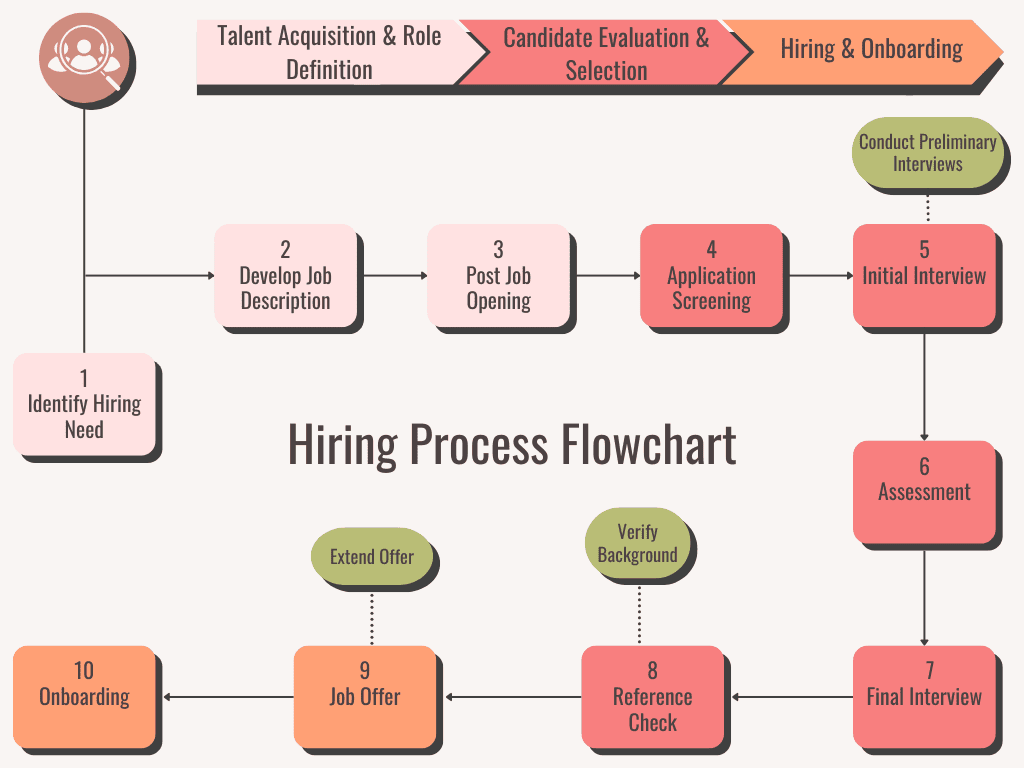
Industry-Specific Considerations
Information Technology and Software Development
The IT sector remains the largest employer of Indian technical talent, but hiring patterns have shifted significantly toward specialized skills and experience levels. Generic “software developer” descriptions no longer suffice in a market where specific technology expertise drives compensation and career advancement.
Full-stack developers represent the most sought-after skillset, combining frontend, backend, and cloud capabilities. Job descriptions should specify technology stacks clearly: “Full Stack Developer – React/Next.js frontend, Node.js/Express backend, AWS/MongoDB hosting.” This specificity attracts qualified candidates while filtering out mismatched applications.
DevOps and cloud engineering roles require particular attention to certification requirements and hands-on experience. Indian professionals often pursue AWS, Azure, and GCP certifications, so acknowledging these credentials demonstrates market awareness and technical understanding.
Financial Services and FinTech
The financial services sector is projected to see salary increments of 10.3% in 2025, driven by demand for fintech specialists, digital banking experts, and cybersecurity professionals. Job descriptions in this sector must balance technical requirements with regulatory and compliance considerations.
Security and compliance expertise has become crucial for financial services roles. Highlight requirements for fraud detection, risk management, and regulatory compliance knowledge to attract candidates with relevant experience. PCI DSS, SOC 2, and other compliance frameworks deserve specific mention when relevant.
Healthcare Technology and Telemedicine
Healthcare technology represents a rapidly growing sector for Indian talent, particularly following increased digital health adoption. Job descriptions should emphasize the social impact and mission-driven aspects that often motivate healthcare technology professionals.
Regulatory knowledge specific to healthcare (HIPAA, FDA guidelines, medical device regulations) requires explicit mention. Indian professionals with healthcare technology experience understand these frameworks and appreciate roles that acknowledge their specialized knowledge.
Common Mistakes and How to Avoid Them
Over-Requirements and Experience Inflation
Many organizations inadvertently discourage qualified candidates by listing excessive requirements or unrealistic experience expectations. Research shows that women and minority candidates are less likely to apply when they don’t meet every listed requirement, while others may apply regardless of fit.
Limit requirements to truly essential skills and qualifications. Instead of “10+ years experience required,” consider “7+ years experience, with demonstrated leadership and technical depth.” This approach attracts experienced professionals while remaining inclusive of high-potential candidates.
Separate requirements by importance: “Required,” “Preferred,” and “Nice-to-Have” categories help candidates understand priorities and self-assess appropriately. This structure increases application quality while maintaining comprehensive skill coverage.
Generic Company Descriptions
Boilerplate company descriptions fail to differentiate organizations in competitive talent markets. Indian professionals, like candidates globally, research potential employers extensively and expect authentic, specific information about culture, mission, and values.
Provide concrete examples of company culture in action: “Monthly learning hours where engineers explore new technologies” or “Annual company retreat to Goa for team building and strategic planning.” These specific details create emotional connection and help candidates envision their experience with your organization.
Ignoring Mobile Optimization
Mobile optimization has become critical as Indian professionals increasingly use smartphones for job searching and applications. Complex application processes, lengthy forms, and desktop-only experiences create barriers that eliminate otherwise qualified candidates.
Ensure application processes work seamlessly on mobile devices. Test job descriptions and application flows on various screen sizes and connection speeds. Simple, streamlined processes increase conversion rates and improve candidate experience.
Measuring and Optimizing Performance
Key Performance Indicators
Effective job description optimization requires systematic measurement and continuous improvement. Key metrics include application-to-view ratios, candidate quality scores, time-to-fill, and offer acceptance rates. Track these metrics by role type, seniority level, and geographic market to identify optimization opportunities.
Application quality metrics help distinguish between volume and value. High application volumes with low qualification rates suggest overly broad or unclear descriptions, while low volumes with high qualification rates might indicate overly restrictive requirements or poor visibility.
A/B Testing and Iteration
Systematic testing of different approaches yields data-driven insights for continuous improvement. Test variations in salary transparency, growth opportunity descriptions, and cultural messaging to understand what resonates with your target talent pool.
Geographic and demographic segmentation in testing reveals regional preferences and cultural nuances. What works for Bangalore professionals might differ from Chennai or Pune markets, requiring tailored approaches for maximum effectiveness.
Feedback Integration
Candidate feedback provides direct insights into job description effectiveness. Post-application surveys, interview feedback, and exit interview data reveal gaps between perception and reality in role descriptions.
Hiring manager feedback helps align job descriptions with actual role requirements and team dynamics. Regular reviews ensure descriptions remain current as roles evolve and organizational priorities shift.
Technology Tools and Platforms
Applicant Tracking Systems Integration
Modern ATS platforms offer sophisticated job description optimization features including keyword analysis, bias detection, and performance tracking. Leverage these tools to improve both content quality and search visibility.
Integration with job boards and social media platforms requires attention to formatting and platform-specific optimization. LinkedIn, Indeed, and Naukri.com each have unique algorithms and candidate behavior patterns that influence job description performance.
AI-Powered Optimization
Artificial intelligence tools can identify gender-coded language, suggest improvements, and predict candidate engagement. These tools help eliminate unconscious bias while improving overall description effectiveness.
Natural language processing can analyze successful job descriptions to identify patterns and best practices. This data-driven approach complements human insight with systematic optimization.
Legal and Compliance Considerations
Equal Opportunity and Discrimination Prevention
Job descriptions must comply with equal opportunity employment laws while remaining effective at attracting target talent. Avoid language that could be construed as discriminatory based on age, gender, religion, or other protected characteristics.
Include explicit equal opportunity statements to demonstrate organizational commitment to diversity and inclusion. These statements should feel authentic and integrated rather than perfunctory addendum.
Data Privacy and Protection
Indian data protection regulations require careful handling of candidate information and application data. Job descriptions should include appropriate privacy notices and data handling explanations to maintain legal compliance and candidate trust.
GDPR compliance remains important for organizations operating in European markets or handling European citizen data. Clear privacy policies and consent mechanisms protect both organizations and candidates.
Future Trends and Adaptation Strategies
AI and Automation Impact
The rise of AI in recruitment is reshaping job descriptions from both creation and consumption perspectives. 60% of Indian employers plan to leverage AI for salary benchmarking and compensation strategies by 2028, indicating significant technological adoption in HR processes.
Job descriptions must now address AI collaboration and human-AI working relationships. Roles increasingly involve working alongside AI tools, requiring new skill descriptions and competency frameworks.
Remote and Hybrid Work Evolution
Remote work preferences continue to evolve in the Indian market, with professionals expecting increasingly sophisticated flexibility options. Job descriptions must address not just location flexibility but also cultural support for distributed teams.
Asynchronous collaboration skills have become valuable competencies that deserve explicit mention in role requirements. Communication, documentation, and self-management abilities enable effective remote work performance.
Skills-Based Hiring Growth
The shift toward skills-based hiring reduces emphasis on traditional degree requirements while focusing on demonstrated competencies and practical experience. Job descriptions must evolve to reflect this changing paradigm.
Portfolio-based evaluation and practical skill demonstration are becoming standard practices. Job descriptions should encourage candidates to showcase relevant work examples and practical experience beyond formal credentials.
Conclusion
Optimizing job descriptions for Indian talent represents both a strategic imperative and a competitive advantage in today’s global technology marketplace. The convergence of cultural preferences, market dynamics, and technological capabilities demands sophisticated, culturally-aware approaches to talent attraction and engagement.
Success requires understanding the unique characteristics of Indian professionals: their growth orientation, preference for transparency, emphasis on work-life balance, and appreciation for clear career development paths. Organizations that master these nuances gain access to one of the world’s most valuable talent pools while building sustainable competitive advantages.
The data clearly demonstrates that optimization efforts yield measurable returns: higher application volumes, improved candidate quality, faster hiring cycles, and better long-term retention. As salary transparency becomes standard, growth opportunities become differentiators, and cultural fit becomes crucial, job descriptions must evolve from simple role outlines to comprehensive value propositions.
The future belongs to organizations that can effectively communicate their unique value while respecting cultural preferences and individual career aspirations. By implementing the strategies and best practices outlined in this analysis, companies can build robust pipelines of Indian talent that drive innovation, growth, and competitive success in an increasingly digital global economy.
Investment in job description optimization represents investment in organizational capability and market positioning. As competition for top talent intensifies and candidate expectations continue to evolve, those organizations that master the art and science of compelling job descriptions will consistently attract and retain the best professionals India has to offer.



